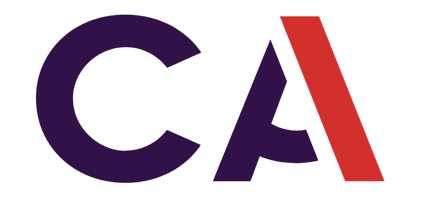When technology met accountability
In early 2018, few could predict that an obscure data analytics firm would ignite one of the most significant media investigations of the 21st century.
When Carole Cadwalladr and the Guardian/Observer team broke the Cambridge Analytica story, they didn’t just expose a company — they uncovered a system of digital manipulation that had been hiding in plain sight.
- When technology met accountability
- Data journalism takes center stage
- The collaboration era of journalism
- Whistleblowers and the new media ethics
- Exposing the machinery of disinformation
- The rise of transparency journalism
- Fact-checking in the algorithmic age
- AI: the new reporting frontier
- Protecting the public’s right to know
- The continuing impact on media culture
The story blurred the line between technology and journalism.
It required new investigative tools, data analysis techniques, and collaborations between reporters, hackers, and whistleblowers.
Data journalism takes center stage
Before Cambridge Analytica, “data journalism” was often seen as a niche skill.
Afterward, it became essential.
Reporters realized that understanding algorithms, databases, and digital footprints was as important as knowing how to conduct an interview.
The investigation forced newsrooms to expand their technical capabilities.
Journalists learned to analyze leaked data sets, map social networks, and interpret metadata.
Technology became a central tool in storytelling — not just a subject of it.
The collaboration era of journalism
The Cambridge Analytica scandal also highlighted the power of collaboration.
No single reporter or outlet could have uncovered the entire story.
It took partnerships across borders — from The Guardian in the U.K. to Channel 4 News, The New York Times, and independent digital rights activists.
This model of cross-border investigative journalism has since become the norm for tackling complex global issues like disinformation, cybercrime, and AI ethics.
Data knows no borders — and now, neither does accountability.
Whistleblowers and the new media ethics
The scandal redefined how journalists work with sources.
Whistleblowers like Christopher Wylie and Brittany Kaiser showed that those inside tech companies could be key allies in exposing unethical behavior.
But their testimonies also raised ethical dilemmas: how far should journalists go in protecting sources who break confidentiality agreements?
Media outlets had to rethink their protection protocols — using encrypted channels like Signal and SecureDrop to ensure anonymity and safety.
Transparency became a two-way street between journalists and their informants.
Exposing the machinery of disinformation
Cambridge Analytica didn’t just reveal the misuse of data — it revealed the infrastructure of modern propaganda.
Reporters learned to trace digital fingerprints across fake news networks, bot accounts, and coordinated campaigns.
These techniques are now standard practice in investigative journalism.
Outlets like Bellingcat and The Intercept use open-source intelligence (OSINT) to expose corruption, war crimes, and misinformation on a global scale.
The rise of transparency journalism
In response to the scandal, media organizations realized they had to hold themselves to the same standards they demanded from tech companies.
Transparency about sources, methods, and funding became a core principle.
Many outlets now include detailed “How We Reported This” sections explaining how data was verified and stories were built.
This new era of transparency journalism strengthens public trust in an age of skepticism.
Fact-checking in the algorithmic age
The flood of disinformation that followed the Cambridge Analytica scandal accelerated the rise of fact-checking organizations.
Platforms like Snopes, PolitiFact, and Full Fact began collaborating directly with social media companies to debunk viral falsehoods.
But this relationship remains complex — journalists must verify without becoming censors.
The new challenge is balancing truth, freedom, and algorithmic responsibility.
AI: the new reporting frontier
Artificial intelligence is now shaping journalism in the same way it shaped Cambridge Analytica’s operations — through data.
Newsrooms use AI tools to detect trends, analyze leaks, and even identify coordinated misinformation campaigns.
However, this also raises ethical concerns: if algorithms help write or verify news, who ensures their neutrality?
The next wave of journalism ethics must address machine accountability.
Protecting the public’s right to know
The scandal reminded journalists that their ultimate duty is to the public.
In a world dominated by algorithms and opaque data systems, journalism remains one of the few forces capable of exposing how power operates behind screens.
Investigative reporters now see themselves not just as storytellers, but as digital watchdogs — guarding against manipulation, censorship, and hidden influence.
The continuing impact on media culture
The Cambridge Analytica investigation inspired a wave of documentaries, podcasts, and books exploring data privacy, democracy, and surveillance.
It also introduced a new visual language for digital storytelling — blending code, graphics, and narrative.
Journalism today is more multimedia, more collaborative, and more skeptical than ever — all because one story revealed how much was at stake.
Takeaway: The Cambridge Analytica investigation didn’t just expose a company; it redefined journalism for the digital era.
It taught reporters to think like technologists, to collaborate beyond borders, and to fight for transparency in a world built on opacity.







